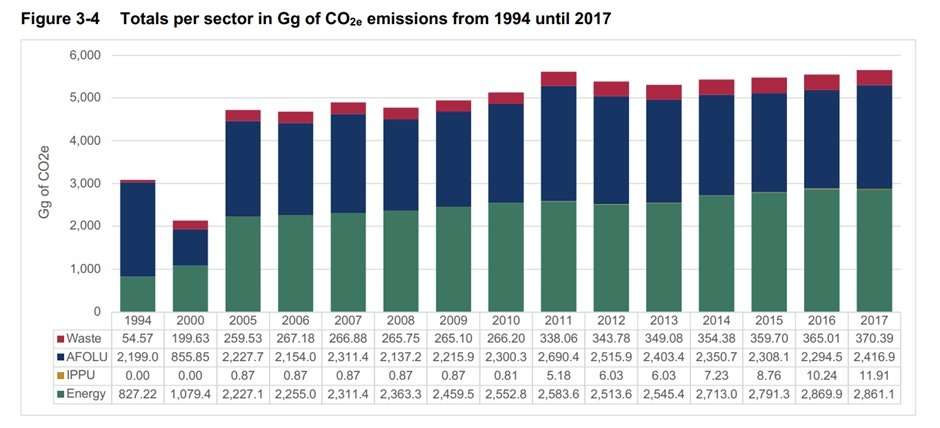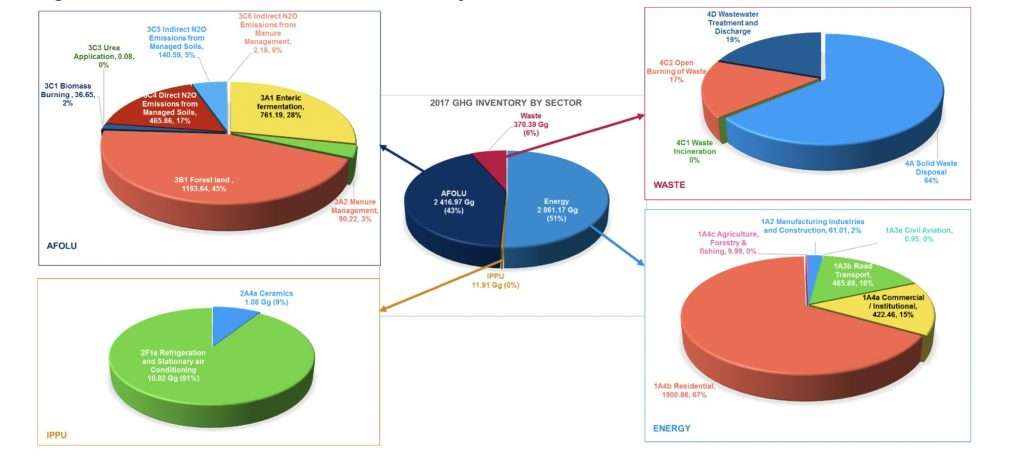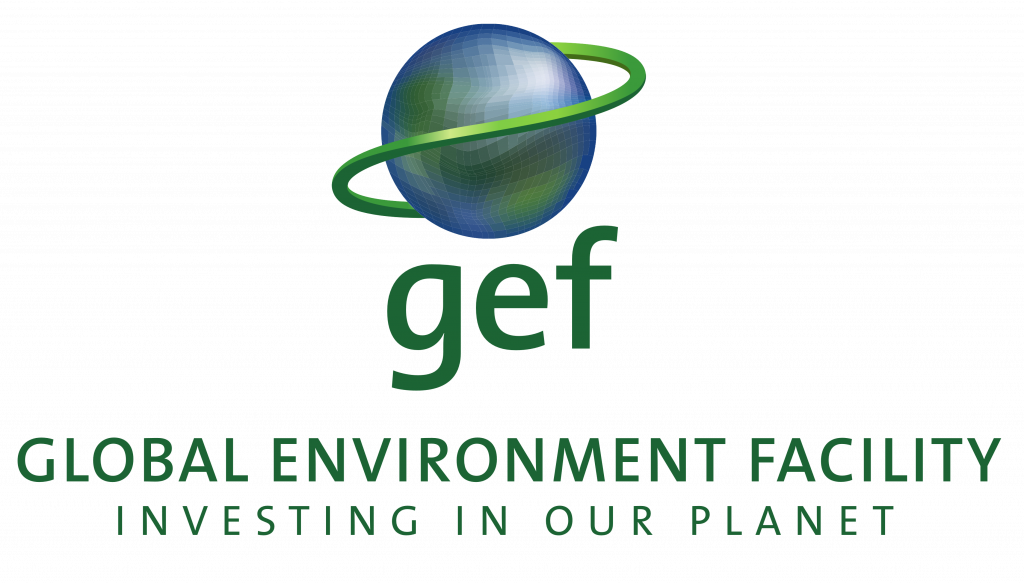Overview of Climate Change
Lesotho’s GHG Profile
According to Article 4, paragraph 1 (a), and Article 12, paragraph 1(a) of the Convention, developing countries are to prepare and communicate to the Conference of the Parties (COP), a national inventory of anthropogenic emissions by sources and re-movals by sinks of all greenhouse gases (GHGs) not controlled by the Montreal Pro-tocol, to the extent its capacities permit, following the provisions in these guidelines.
Although Lesotho is not a major contributor of greenhouse gases (GHGs) globally, it is a net emitter, hence its small contribution still add up to the total GHGs in the world. Compilation of greenhouse gas inventory in Lesotho is done through two main projects, namely; National Communications and Biennial Reports.

Lesotho has compiled four National GHG inventories to date. Based on the revised 1996 IPCC guidelines the country compiled two inventories for the year 1994 and 2000. While under the 2006 IPCC guidelines the 3rd inventory was compiled covering the years 2005 to 2010 under the Third National Communication and 4th inventory covered the years 2011 to 2017. Lesotho has experienced a decrease in GHG emission between 2011 and 2013 due to the decrease in energy sector emissions resulting from decreased consumption of petroleum fuels over that period as well as decrease in AFOLU emissions. The country’s net GHG emissions amounted to 5 660.44 Gg CO2e in 2017, with the energy, AFOLU, waste and IPPU sectors contributing 50.5%, 42.7%, 6.5% and 0.3% respectively. Residential energy consumption is the biggest contributor to the energy sector emissions.
As depicted in energy sector had been the most contributing sector to the inventory followed by AFOLU sector between the years 2013 and 2017. The opposite was observed for the years 2011 and 2012 from the same figures, while the IPPU sector was the least contributor throughout the period averaging 0.14%.
Summary of Lesotho's
GHG Inventory






